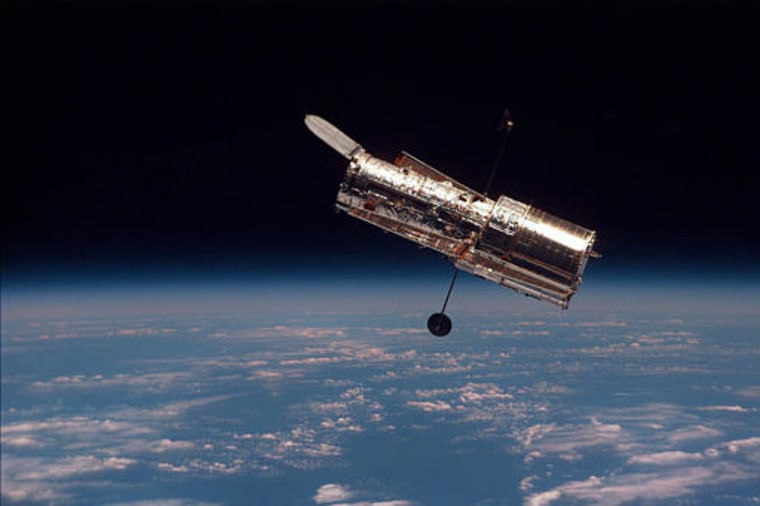Top NASA officials Monday likened the expected demise of the Hubble Space Telescope to a death in the family and disagreed with agency engineers who wanted to keep the popular program alive.
“There is life beyond Hubble, as much as I hate to admit that,” said Ed Weiler, NASA’s head of space science.
Weiler — along with Bill Readdy, head of spaceflight at NASA, and John Grunsfeld, the agency’s chief scientist — took issue with reports by NASA engineers that argued it was no riskier for astronauts to pay a service call on the orbiting telescope than it was for them to build the international space station.
The reports, written by NASA engineers who declined to be named for fear of losing their jobs, dispute the Jan. 16 decision by NASA Administrator Sean O’Keefe to forgo a scheduled shuttle mission to repair and upgrade Hubble in 2005 or 2006.
Without the maintenance mission, which would repair failing gyroscopes and replace fading batteries, the telescope will eventually stop functioning and will need to be nudged out of orbit toward Earth in a controlled descent.
Regrets expressed
At a telephone news conference, the three NASA officials expressed regret at the expected end of the Hubble project, one of the most popular and visible in the U.S. space agency’s history.
However, Readdy, a former shuttle astronaut, said NASA had already analyzed the question of whether to send astronauts to fix Hubble, and determined that it was unsafe. NASA has said the Hubble offers no “safe haven” for astronauts seeking refuge from a damaged shuttle, while the space station does.
“The documents (from the engineers) really did not go into the kind of depth and detail that we already had,” Readdy said, who faulted the two engineers’ reports for their “superficial” take.
“It’s unfortunate the outcome is the way it is, but the white paper really did not capture the totality of the decision-making process or the complexity of the issues,” Readdy said.
The decision to stop human maintenance flights to Hubble was made based on safety recommendations by investigators who probed the fatal disintegration of the shuttle Columbia during its re-entry on Feb. 1, 2003. All seven astronauts were killed.
The independent experts said NASA’s “broken safety culture” allowed internal criticism to be pushed aside in deference to schedule pressures.
Regarding a possible shuttle mission to Hubble, Readdy said schedule pressures and logistics would be formidable, especially if NASA were required to ready two shuttles simultaneously — one to service Hubble and a second to wait on an adjacent launch pad to be used if a rescue was needed.
'Quality time'
Grunsfeld, a former shuttle astronaut who was on the last Hubble servicing mission aboard shuttle Columbia in 2002, had personal feelings about the telescope.
“I’m in the position of being the last person ever to hug Hubble,” Grunsfeld said. “I know we’ve allowed the American public to fall in love with Hubble, for good reason.”
Grunsfeld said the decision not to service Hubble was based on “a good rationale.”
“So we have a family member that has now a timetable for when that family member’s going to depart and we all feel bad,” he said. “I think the most important thing is to make sure that the time we have left is quality time.”
